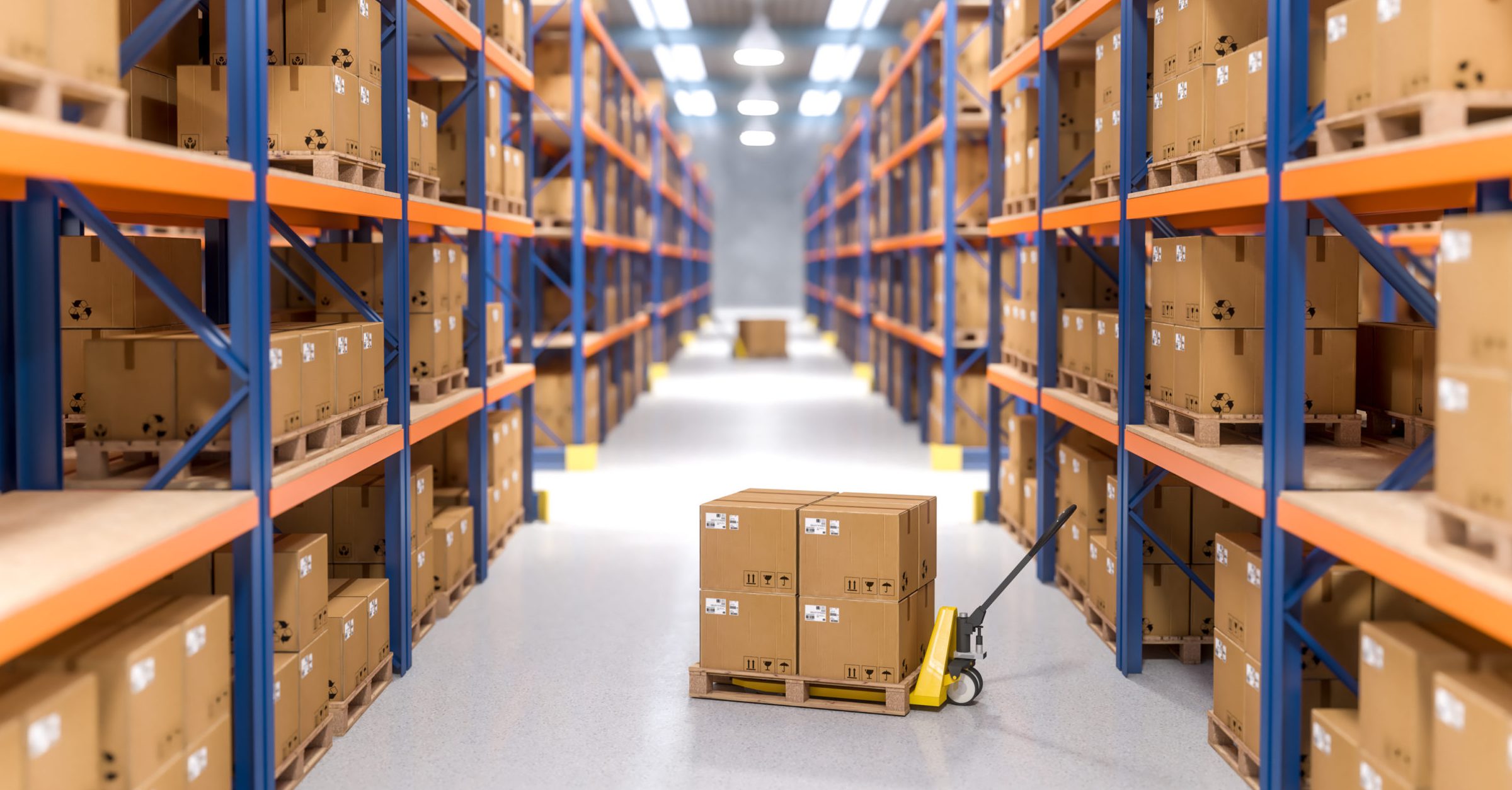Warehousing
Warehousing is the process of storing physical goods before they are sold or further distributed in a dedicated warehouse or storage facility. Warehouses safely and securely store products in an organized way to track where items are located, when they arrived, how long they have been there, and the quantity on hand.
For small or new businesses, warehousing inventory may be done from home until they outgrow the space. At that point, a business will have to rent storage space, lease a warehouse, or outsource logistics to a third-party and store inventory in their warehousing facilities.
In ecommerce, products are stored until an order is placed online, at which point the order is shipped directly to the consumer from the facility in which it was stored. In traditional retail, inventory may be temporarily stored in a warehouse before it’s shipped to a physical store.
At Hello3PL we offer pallet storage, shelf storage and secure cage storage at our warehouse facility. You can be confident that your stock is safe and secure with 24/7 video surveillance and security monitoring. Our warehouse employees are focused on efficiency, productivity, and accuracy.
WAREHOUSING LOGISTICS
Hello3PL understands that warehousing logistics is at the core of any business that sells physical goods. We pride ourselves on ensuring these important elements of warehousing are optimise which include warehouse management, warehousing services, operations, warehouse management systems and returns processing.
1. Warehouse management
Warehouse management is the strategic day-to-day running of operations in a warehouse to promote, improve, and ensure operational excellence. Managing a warehouse means overseeing all staff, training, inventory, equipment, safety and security, relationships with shipping carriers, and other moving pieces.
Responsibilities include:
- Forecasting and managing projected volume and labor
- Ensuring the proper safety gear is used and best safety practices are followed at all times
- Obtaining the proper licenses and certifications for anyone operating equipment
- Maintaining compliance and requirements for regulatory agencies
- Continuously planning and managing operations as the business grows and becomes more complex
- Keeping goods secure and accessible and performing warehouse audits as needed
- Providing clear instructions on how to receive, unpack, retrieve, pack, and ship inventory
- Setting up bins and other storage spots in optimal places to minimize the effort required to move between destinations
- Recording all inbound and outbound shipments and collecting the proper documentation
2. Warehouse operations
Warehousing operations refers to the processes that take place in a warehouse revolving around the movement of goods and tracking inventory. Principles of warehousing include functions such as receiving inventory, then placing each stock keeping unit (“SKU”) into a separate dedicated storage location (e.g., in a shelf, bin, or on a pallet), and sending product to its next destination.
Efficient warehousing operations help keep:
- Costs low
- Inventory received and shipped on time
- Staff productive
- Sufficient quantities of product on hand
- Space below capacity
- Storage optimized and aisles clear
- Equipment used effectively
- Customers happy
3. Warehouse management systems
A warehouse management system (WMS) is a type of software that provides the tools necessary to manage warehouse operations and inventory movement to save time and eliminate manual processes. Warehouse management systems help optimize inventory and tracking, warehousing operations, workload distribution, and shipping.
These types of warehousing solutions give you unprecedented visibility and real-time insight into every action that’s happening in the warehouse. A good warehouse management system will even help generate electronic picking lists based on orders that have inventory stored close to one another to decrease inefficiencies.
4. Returns Processing
Warehousing logistics includes being prepared for returns, especially when there is no in-store return option. Warehousing operations must be able to receive, assess, and process each returned item. You may even aim to provide customers with prepaid return labels, share return tracking and refund information, and make it as painless of an experience as possible for customers.
We know how important returns are for eCommerce and therefore treat reverse logistics very seriously. We have a number of reverse logistics processes to manage your customer returns.

